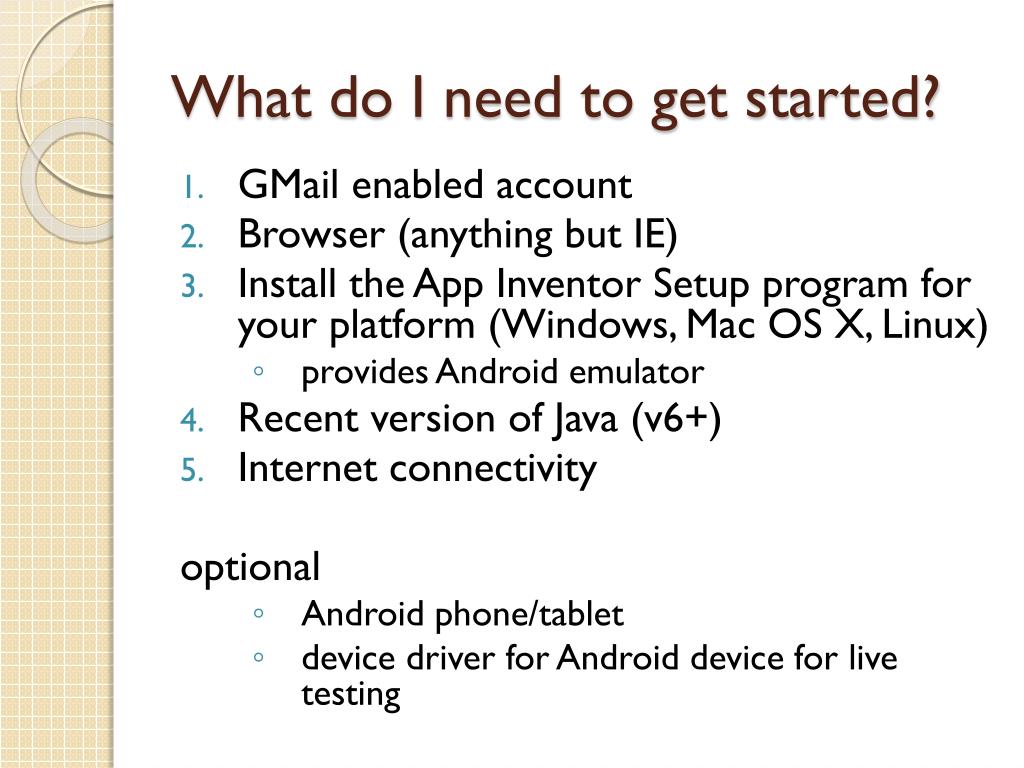

- #App inventor emulator on mac how to
- #App inventor emulator on mac for android
- #App inventor emulator on mac android
Programmer connect and stack these programming blocks in the same way that someone would stack lego pieces. That means, they enable users to create programs using visual block-like puzzle pieces.

App Inventor and Scratch are both visual programming languages. It can be considered a younger sister of the Scratch programming language, created at MIT, as it has adopted many factors from Scratch. It was created by MIT Professor Hal Abelson, while he was a visiting professor at Google. With that, here's a bit of background information.Īs previous mentioned, App Inventor is hosted by MIT. To conclude the presentation, more instructional resources will be shared along with other platforms that can also be used to build AR apps. We will watch a few examples and take a quiz to test your knowledge. Once done, we will drill down into the components that enable the creation of AR apps.
#App inventor emulator on mac how to
It is my hope that, overall, these activities will demonstrate how to use App Inventor, showcase its components, and illustrate how they are used to create an app.
#App inventor emulator on mac android
Later, you can follow some of these resources and the tutorials they feature to guide you through the creation of your own android apps.

As such, I'll point you to the installation and setup processes of App Inventor as well as resources that can help you troubleshoot any issues you may have. I've worked directly with the App Inventor Team for over two years now and am fairly confident in the material available to give newcomers a tour. Therefore, to not recreate the wheel, I will simply give an overview of these features and point you to these resources as we begin. As a result, there are numerous resources and introductory tutorials available online and in printed form to help you get acquainted with how to use it. It was first created at Google and is now hosted and maintained by the Center for Mobile Learning at MIT. But more on those later.įor now, let me share how this presentation is structured and how it will help you learn about the programming features needed to create an AR app.Īpp Inventor has been around for over three years. Although introducing you to the entire platform is necessary for app development, the main goal of this presentation is to highlight those features of the tool that are used to create augmented reality apps - namely those programming elements that control a smartphone's camera and the sensors I just described.
#App inventor emulator on mac for android
In this presentation, I will introduce App Inventor, a mobile application development tool created to help nonprogrammers build a wide variety of apps for android devices. Essentially, this means, augmented reality apps require a device. If a person moves and leaves his/her device stationary, nothing will happen. It is important to remember that these features are detected in the device only, not the person holding the device. To do this, AR apps are enabled through the use of a smartphone's camera and its sensors - these being the location sensor, which uses GPS - the Global Positioning System administered by the US the orientation sensor, which detects in which direction your device is pointing and the accelerometer, a sensor that detects and reports movement and acceleration in 3 directions (x, y, z). In a sense, AR apps allow your phone to become a window into a data-driven world. Most Augmented Reality (AR) Mobile Apps are designed to overlay location data (points, images, etc.) onto the live view of a mobile device's camera. Technically speaking, what is an augmented reality app, anyway? I will 'virtually' pause to give you time to perform these steps and then 'virtually' resume again, presuming you have successfully completed them.ĪUGMENTED REALITY APPS (briefly explained) These steps will ultimately teach you how to use App Inventor to manipulate the technical features of a device, in order to create any augmented reality app you can think of. This presentation may be a bit longer than other class presentations as it expects you to use your computer to perform the various setup, installation, and programming steps (tutorials) needed to become familiar with using App Inventor. My presentation is going to shed light on the technical aspects of AR apps and how to use App Inventor to create them. So far in our Analysis & Design of Technology-Based Learning Environments class (EDIT732), we've been talking about Augmented Reality (AR) apps from a consumer's perspective and the instructional design challenges therein.


 0 kommentar(er)
0 kommentar(er)
